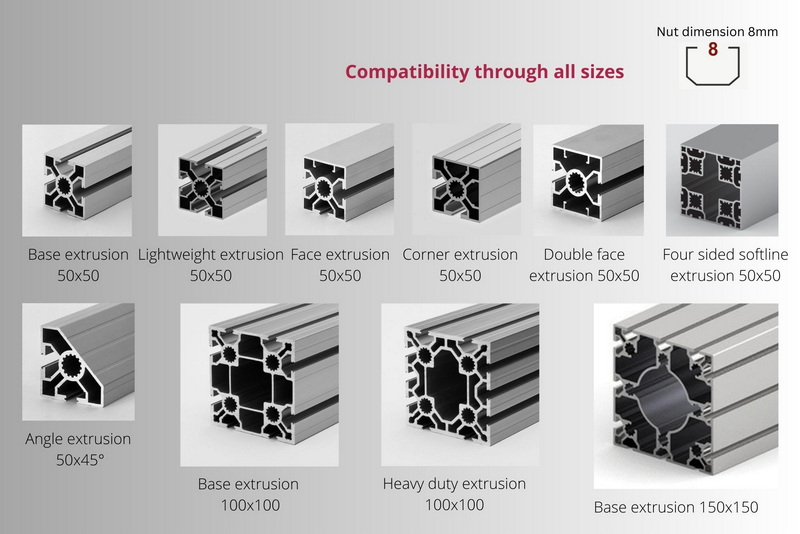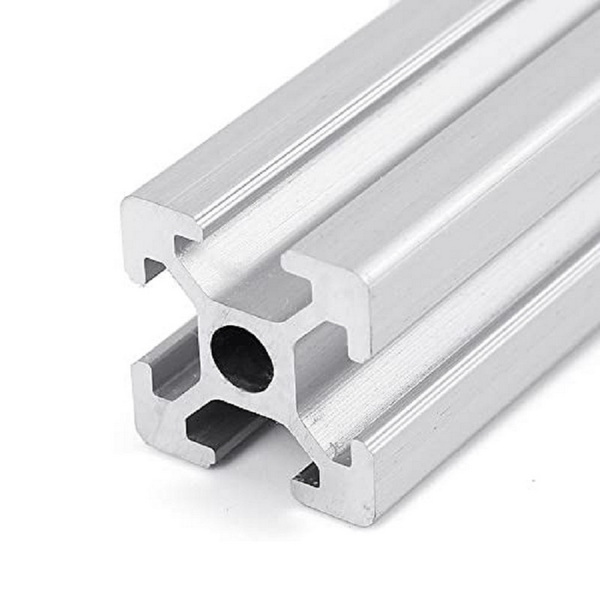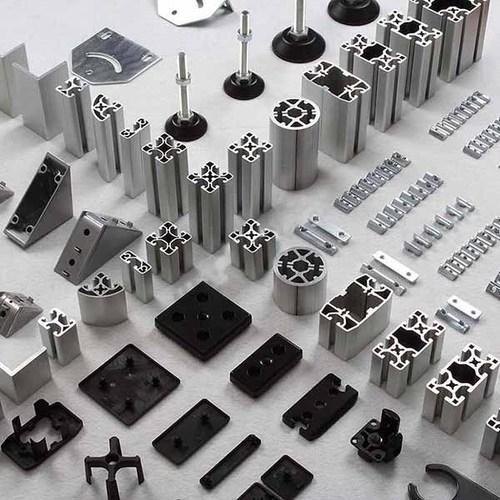Content Menu
● Understanding Aluminum Extrusion Tolerances
>> Material Properties
>> Extrusion Process Parameters
>> Cooling Methods
>> Post-Extrusion Treatments
>> Quality Control Measures
>> Design Considerations
>> Industry Standards
● Conclusion
● Frequently Asked Questions
>> 1. What are the typical tolerances for aluminum extrusions?
>> 2. How does the choice of aluminum alloy affect tolerances?
>> 3. What role does die design play in achieving tolerances?
>> 4. How can manufacturers ensure consistent tolerances?
>> 5. What are the consequences of not meeting tolerances in aluminum extrusions?
Understanding Aluminum Extrusion Tolerances
Tolerances in aluminum extrusion are defined as the permissible limits of variation in a physical dimension. They are essential for ensuring that the extruded parts fit together correctly and function as intended. Tolerances can be influenced by several factors, including the material properties, the extrusion process, the die design, and the cooling methods used.

Material Properties
The properties of the aluminum alloy used in the extrusion process significantly impact the tolerances that can be achieved. Different aluminum alloys have varying mechanical properties, such as strength, ductility, and thermal conductivity. For instance, alloys with higher strength may be more challenging to extrude, leading to tighter tolerances. Additionally, the alloy's response to heat treatment can affect its dimensional stability after extrusion.
Aluminum alloys are categorized into series based on their primary alloying elements. For example, the 6000 series, which includes alloys like 6061 and 6063, is commonly used for extrusion due to its excellent corrosion resistance and good workability. Understanding the specific properties of the chosen alloy is essential for predicting how it will behave during the extrusion process and how it will maintain its dimensions post-extrusion.
Extrusion Process Parameters
The parameters of the extrusion process itself play a vital role in determining tolerances. Key parameters include:
- Temperature: The temperature of the aluminum during extrusion affects its flow characteristics. Higher temperatures can improve flow but may also lead to increased oxidation and surface defects. Maintaining optimal temperatures is crucial for achieving consistent tolerances. The temperature must be carefully controlled to ensure that the aluminum remains malleable enough to flow through the die without causing defects.
- Extrusion Speed: The speed at which the aluminum is extruded can influence the final dimensions. Faster extrusion speeds may lead to variations in thickness and surface quality, while slower speeds can improve dimensional accuracy. However, slower speeds can also increase production time, so a balance must be struck between speed and quality.
- Die Design: The design of the extrusion die is one of the most critical factors affecting tolerances. A well-designed die can minimize variations in wall thickness and ensure uniformity in the extruded profile. Factors such as die angle, land length, and exit profile all contribute to the final tolerances. The die must be engineered to accommodate the specific alloy and the desired profile, taking into account the flow characteristics of the material.
Cooling Methods
After extrusion, the cooling process can significantly impact the final dimensions of the aluminum profile. Rapid cooling can lead to warping or distortion, while slow cooling may allow for more uniform contraction. The method of cooling—whether air cooling, water quenching, or other techniques—must be carefully controlled to maintain the desired tolerances.
Cooling rates can also affect the microstructure of the aluminum, which in turn influences its mechanical properties. For example, rapid cooling can lead to a finer grain structure, which may enhance strength but could also introduce residual stresses that affect dimensional stability.
Post-Extrusion Treatments
Post-extrusion treatments, such as aging, annealing, and surface finishing, can also affect tolerances. These processes can alter the mechanical properties of the aluminum and may lead to dimensional changes. For example, aging can enhance strength but may also cause slight dimensional variations. Understanding how these treatments interact with the extrusion process is essential for maintaining tolerances.
- Aging: This process involves heating the extruded aluminum to a specific temperature for a set period, allowing for the precipitation of alloying elements. While this can improve strength, it may also lead to slight changes in dimensions.
- Annealing: Annealing is a heat treatment that relieves internal stresses and improves ductility. This process can help restore dimensional stability but may also result in some dimensional changes.
- Surface Finishing: Processes such as anodizing or painting can add thickness to the surface of the extruded profile, which must be accounted for in the initial design and tolerances.

Quality Control Measures
Implementing effective quality control measures throughout the extrusion process is crucial for achieving and maintaining tolerances. Regular inspections, dimensional checks, and process monitoring can help identify deviations early and allow for corrective actions. Advanced technologies, such as laser measurement systems and automated inspection tools, can enhance the accuracy of quality control processes.
Quality control should begin with the selection of raw materials and continue through every stage of the extrusion process. By establishing a robust quality management system, manufacturers can ensure that their products consistently meet the required specifications.
Design Considerations
The design of the aluminum profile itself can influence the achievable tolerances. Complex shapes with varying wall thicknesses may be more challenging to extrude accurately than simpler designs. Designers must consider the limitations of the extrusion process when creating profiles to ensure that tolerances can be met.
Designers should also collaborate closely with engineers and manufacturers to understand the capabilities and limitations of the extrusion process. This collaboration can lead to innovative designs that optimize both functionality and manufacturability.
Industry Standards
Various industry standards govern the tolerances for aluminum extrusions. These standards provide guidelines for acceptable limits of variation and help ensure consistency across different manufacturers. Familiarity with these standards is essential for designers and engineers to specify tolerances accurately.
Standards organizations, such as the Aluminum Association, publish guidelines that outline the acceptable tolerances for various aluminum profiles. Adhering to these standards not only ensures product quality but also facilitates communication between manufacturers and customers.
Conclusion
In conclusion, understanding the key factors influencing aluminum extrusion tolerances is essential for manufacturers and designers. Material properties, extrusion process parameters, cooling methods, post-extrusion treatments, quality control measures, design considerations, and industry standards all play a significant role in determining the achievable tolerances. By carefully managing these factors, manufacturers can produce high-quality aluminum extrusions that meet the required specifications and performance standards.

Frequently Asked Questions
1. What are the typical tolerances for aluminum extrusions?
Typical tolerances for aluminum extrusions can vary based on the profile and alloy used, but they generally range from ±0.005 inches to ±0.020 inches.
2. How does the choice of aluminum alloy affect tolerances?
Different aluminum alloys have varying mechanical properties, which can influence how easily they can be extruded and the tolerances that can be achieved.
3. What role does die design play in achieving tolerances?
A well-designed die minimizes variations in wall thickness and ensures uniformity in the extruded profile, directly impacting the final tolerances.
4. How can manufacturers ensure consistent tolerances?
Implementing effective quality control measures, regular inspections, and process monitoring can help manufacturers maintain consistent tolerances.
5. What are the consequences of not meeting tolerances in aluminum extrusions?
Failing to meet tolerances can lead to poor fit, compromised performance, and increased costs due to rework or scrap.
By understanding and addressing these factors, manufacturers can enhance the quality and reliability of their aluminum extrusions, ultimately leading to better products and satisfied customers.






















